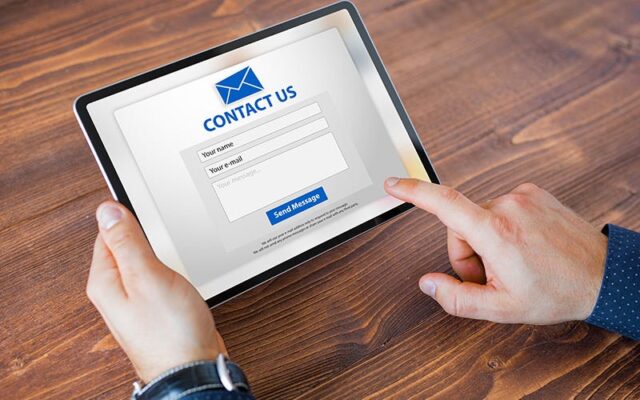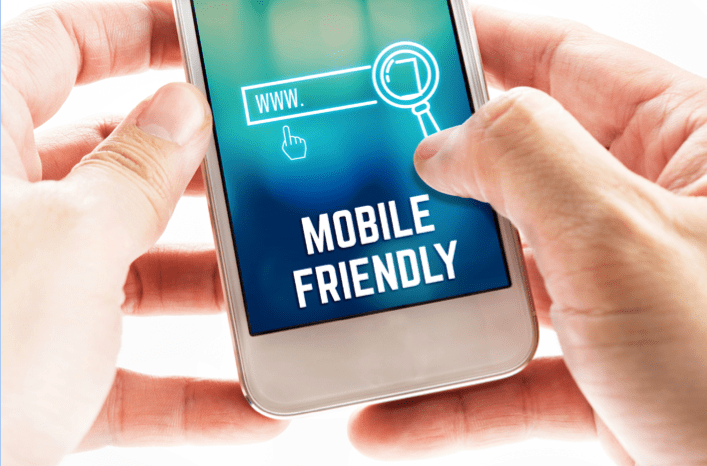A well-designed contact page is an essential element of any website. It serves as the bridge between you and your visitors, making it easy for them to reach out with questions, concerns, or feedback. A user-friendly contact page enhances the overall user experience and can significantly improve your website’s conversion rates. Here’s a guide on how to create an effective and user-friendly contact page for your website.

Table of Contents
Toggle1. Keep It Simple and Clean
When it comes to design, simplicity is key. A cluttered contact page can overwhelm visitors and deter them from reaching out. Keep your layout clean and straightforward by following these principles:
- Minimal Design: Use ample whitespace to separate elements and make the page feel less crowded.
- Clear Headings: Use headings and subheadings to guide users through the page. A simple title like “Contact Us” sets the tone.
- Straightforward Language: Use plain language that is easy to understand. Avoid jargon or complicated terms.
2. Use a Contact Form
A contact form is an essential feature of any user-friendly contact page. It provides a structured way for visitors to submit their inquiries while allowing you to collect relevant information.
Best Practices for Contact Forms:
- Essential Fields Only: Limit the number of fields to those necessary for your response (e.g., name, email, message). Avoid overwhelming users with too many questions.
- Labels and Placeholders: Clearly label each field and consider using placeholder text to provide examples of the information you’re seeking.
- User-Friendly Design: Make sure the form is visually appealing and easy to fill out on both desktop and mobile devices.
3. Provide Multiple Contact Options
Different users have different preferences for how they want to communicate. By offering multiple contact options, you can cater to a broader audience. Consider including the following:
- Email Address: Provide a direct email address for users who prefer traditional email communication.
- Phone Number: Include a phone number for those who want to speak directly with someone. Make sure to indicate your availability for calls.
- Live Chat: If feasible, integrate a live chat option for real-time assistance, enhancing user engagement.
- Social Media Links: Include links to your social media profiles, allowing users to connect with you through their preferred platforms.
4. Include Location Information
If your business has a physical location, include an address and a map on your contact page. This information is particularly important for local businesses and helps build trust with visitors.
Tips for Displaying Location Information:
- Google Maps Embed: Integrate a Google Maps widget to allow users to find directions easily.
- Business Hours: Clearly state your operating hours to inform users when they can expect a response or visit your location.
5. Optimize for Mobile Devices
With an increasing number of users accessing websites via smartphones and tablets, optimizing your contact page for mobile is crucial. Here are some tips:
- Responsive Design: Ensure your contact page adapts well to different screen sizes. Test the page on various devices to confirm functionality and readability.
- Touch-Friendly Elements: Make buttons and form fields large enough for users to interact with easily on touchscreens.
6. Implement Clear Calls to Action (CTAs)
Encourage users to take action by including clear and compelling calls to action. Your CTAs should guide visitors on what to do next, whether it’s filling out the contact form, calling your business, or following you on social media.
Examples of Effective CTAs:
- “Get in Touch Today!”
- “We’d Love to Hear from You!”
- “Send Us Your Questions!”
7. Use Confirmation Messages
Once users submit a message through your contact form, they should receive a confirmation message indicating their inquiry has been received. This message reassures them that their submission was successful and informs them of what to expect next.
Components of Confirmation Messages:
- Thank You Note: Express gratitude for their inquiry.
- Response Time: Inform them about the expected timeframe for a response (e.g., “We’ll get back to you within 24 hours”).
- Next Steps: Let users know what they can do while they wait for a reply (e.g., explore other sections of your website).
8. Monitor and Update
A user-friendly contact page requires ongoing attention. Regularly review your contact page’s performance and make necessary adjustments based on user feedback and analytics. Consider the following:
- A/B Testing: Experiment with different layouts, CTA placements, and wording to see what resonates best with your audience.
- Feedback: Encourage users to provide feedback about their experience with your contact page and use that information to make improvements.
Conclusion
A well-crafted contact page is a vital component of your website that fosters communication and builds trust with your audience. By keeping the design simple, offering multiple contact options, optimizing for mobile, and implementing clear calls to action, you can create a user-friendly contact page that effectively serves your visitors’ needs. Regularly monitor and update your page to ensure it continues to meet user expectations, and watch as your customer engagement and satisfaction improve.


No responses yet